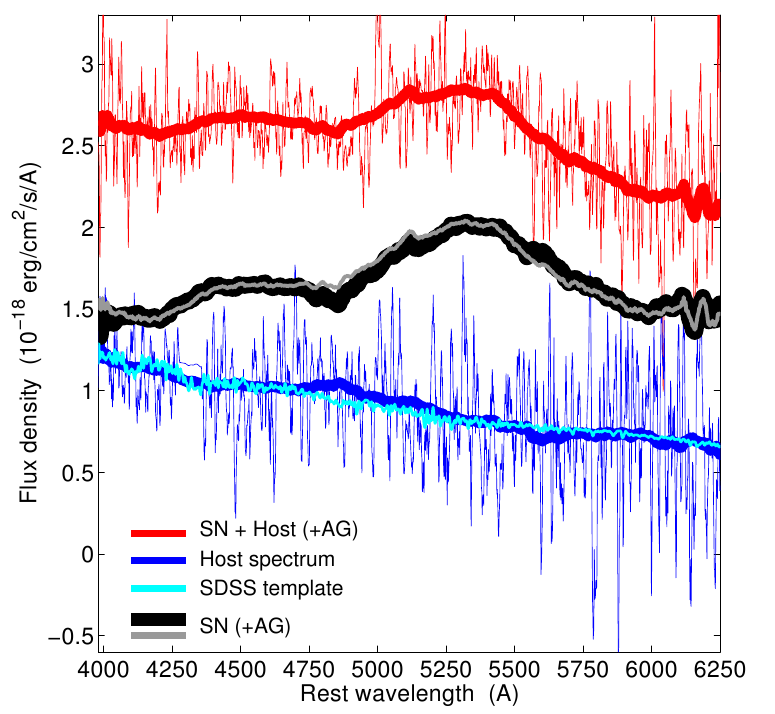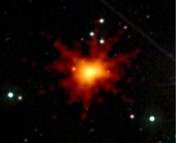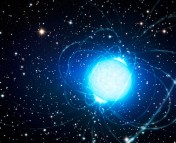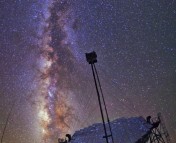Title: The supernova of the MAGIC GRB190114C
Authors: A. Melandri, L. Izzo, E. Pian, D.B. Malesani, M. Della Valle, A. Rossi, P. D’Avanzo, D. Guetta, P.A. Mazzali, S. Benetti, N. Masetti, E. Palazzi, S. Savaglio, L. Amati, L.A. Antonelli, C. Ashall, M.G. Bernardini, S. Campana, R. Carini, S. Covino, V. D’Elia, A. de Ugarte Postigo, M. De Pasquale, A.V. Filippenko, A.S. Fruchter, J.P.U. Fynbo, A. Giunta, D.H. Hartmann, P. Jakobsson, J. Japelj, P.G. Jonker, D.A. Kann, G.P. Lamb, A.J. Levan, A. Martin-Carrillo, P. Moller, S. Piranomonte, G. Pugliese, R. Salvaterra, S. Schulze, R.L.C. Starling, L. Stella, G. Tagliaferri, N. Tanvir, D. Watson
First author’s institution: INAF – Osservatorio Astronomico di Brera
Journal: Accepted for publication in A&A, pre-print available on the arXiv
Let’s set the scene – it’s January 2019. We’ve never heard of COVID, face masks are for skin care, and reputation is Taylor Swift’s most recent album. We’ve also never seen a long gamma-ray burst (GRB) at TeV energy – but that is about to change on Jan 14.
So what *is* a GRB?
Put simply, a GRB is a burst of gamma-rays! (Long) GRBs come from the deaths of massive stars and have a relativistic jet! Supernovae (SNe) are also caused by the deaths of massive stars, and almost all GRBs have an associated supernova (SN), commonly a Type Ic-bl. The GRB mentioned above, named GRB 190114C (to indicate the date & number of GRBs detected that day), was first detected by Swift and The Major Atmospheric Gamma Imaging Cherenkov (MAGIC) telescopes at TeV energies! This GRB is very special (magical, dare I say) and so astronomers were very excited to investigate further. Today’s paper details observations of a supernova component (SN 2019jrj) of this GRB and tries to characterize its behavior based on a possible “jet break.”
Observations
The authors of today’s paper took spectra of this object with the Multi-Object Double Spectrographs (MODS-1 & MODS-2) and with VLT/FORS2. They also observed the field of the GRB with several telescopes, including the Hubble Space Telescope (HST), Very Large Telescope (VLT), & Large Binocular Telescope (LBT), shown in Fig. 1, at times ranging from 1.3 – 370 days after the alert. The GRB is located near the middle of galaxy “A,” but because the two galaxies (“A” & “B”) were often blended, the light from both galaxies needed to be subtracted to get isolated emission from the GRB/SN.

Wait, what’s a “jet break?”
A light curve of a GRB (or any transient with a relativistic jet) will sometimes show what is called a “jet break.” With a relativistic jet, photons will be “relativistically beamed.” In this phenomenon, if the jet is moving relativistically, no matter what direction it’s actually headed in, it’ll appear to be concentrated into a beam (with some beaming angle) in the direction of the jet. The opening angle of this beam is inversely correlated to the speed of the jet, and so as time passes and the jet slows, the photons spread out and the emission fades at a constant rate. Once the beaming angle is equal to (or greater than) the opening angle of the jet, the emission detected will decrease at a steeper constant rate. Graphically, the jet break is a turning point in the light curve where the slope significantly decreases. The jet break is expected to be achromatic and so should happen at the same time in all wavelengths of light.
Results
A previous publication (Misra+ 2021) found slight evidence for a jet break for GRB 190114C at 7 days in the X-Ray light curve, though the data also fit a case where there is a jet break at ~100 days (or essentially, no jet break). The authors of today’s paper compared the two break options in the light curves of this source (shown in Figure 2), and since the supernova emerged at roughly the same time, they weren’t able to establish a jet break time from the light curves. They then computed a pseudobolometric luminosity for this supernova and found that when assuming a jet break of 7 days, its luminosity is comparable to that of the bright GRB-associated SN, SN 2013dx, but when assuming no jet break, its comparable to that of a less-luminous non-GRB-associated SN, SN 2004aw. Because of the uncertainty of the jet break and because the jet break helps to determine characteristics of the GRB & SN, the authors of today’s paper strongly encourage late-time follow-up observations of this source.

Finally, the authors investigate the spectrum of this SN, SN 2019jrj, and try to identify it. These spectral comparisons are shown in Figure 3. They find that despite the uniquely high energy of the gamma-ray burst, the spectrum of the associated SN does not best match that of very high energy supernovae, such as SN 1998bw. In fact, it best matches that of low-luminosity supernova, SN 2004aw. This is an exciting discovery since SN 2004aw did not have an associated GRB and suggests the possibility of a new GRB progenitor type.
![A comparison of SN spectra at maximum light [labeled, multi-colored] to that of SN 2019jrj [black & gray], the SN associated with GRB 190114C.](https://astrobites.org/wp-content/uploads/2021/12/image-2-1024x335.png)
Conclusion
The discovery of this GRB was reported in a few Nature articles, linked here, here, & here, and this source even has its own Wikipedia page! This source is exciting for many reasons, most notably that the GRB has a uniquely high energy and its associated SN doesn’t resemble other high-energy GRB-SNe. This GRB is even more unique in that one hypothesis for its TeV energy is that electrons AND protons (instead of just electrons) are being highly accelerated in the jet. When these high-energy protons interact with photons, it creates pions. These pions then decay into electrons, neutrinos, & photons. The Ice Cube Neutrino Observatory located in Antarctica could have observed these neutrinos, but unfortunately none were detected from this source. That said, the combination of the observatory set-up and location of the GRB made it such that the expected number of detections was n = 0.04, and so a non-detection is not surprising.
This source is an enigma in GRB science and just goes to show that there is still so much to discover in our beautiful universe.
Edited by: Pratik Gandhi
Featured Image Credit: “magical supernovae” in Synthwave by WOMBO




